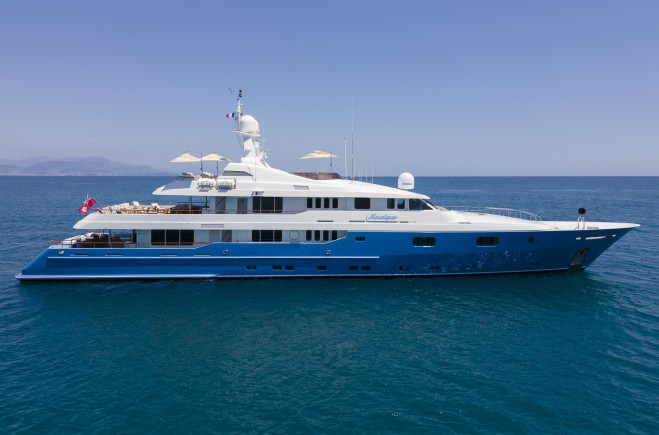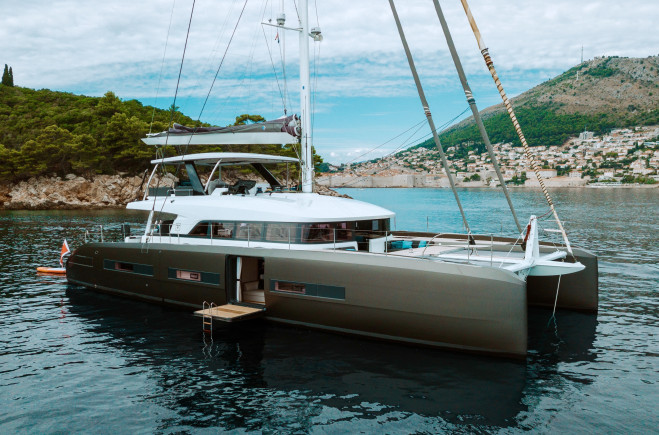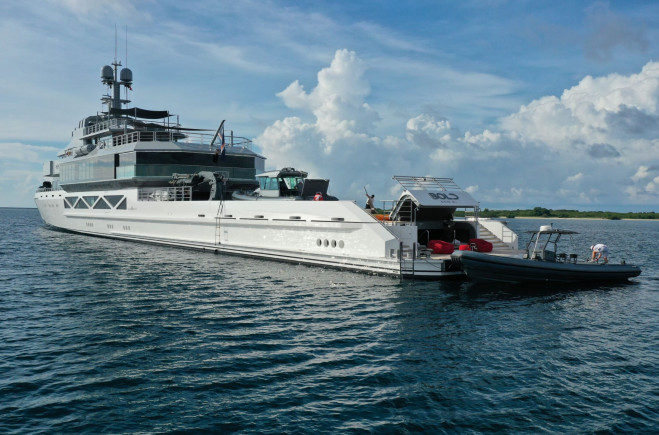There are four major ports of entry to the island. Approaching from the south, the first views are of an island with twin peak mountains jutting out of a lush green rain forest. The twin peaks are the "Pitons" and nestling adjacent to them is the first major settlement in St Lucia. This is the original capital city and port of entry called "Soufriere".
The Bay of Soufriere is suitable for anchorage of pleasure boats or luxury charter yachts, which do, however, require a coral conservation permit issued by the local Soufriere Marine Management Area. The cost of this permit depends on the vessel's size and duration of stay. The town itself is well worth exploring since its main claim to fame is the fact that it was the birthplace in 1763 of Josephine later to become the wife of Napoleon Bonaparte. The town makes full use of this fact and also in the town square it marks the site of the guillotine used in 1780 to execute several plantation owners and their families. The town itself stretches inland and shows several ornate French colonial houses and newer housing developments.
On the southern-most tip of St Lucia we have the much bigger docking area for large boats at 'Vieux Port'. This town is also an official port of entry and anchorages are close to the town's ship docks. The town has its modern supermarkets and shopping malls as well as attractive restaurants. It's white sandy beach are a must for any windsurfing enthusiasts.
A short boat ride from the mainland is the St. Lucia Maria Island with another World Heritage Nature Reserve since it is the nesting place for thousands of migratory birds. This is best viewed between May and August for the nesting time. Touring up the coast from Vieux Port by charter yacht one would pass the fishing villages of Micoud and Praslin with their tiny inlets and perhaps continue up the coast to Cap Estate and Rodney Bay. Here the town has a village inn, a spa, a medical centre and several good restaurants. The northern most town on the island, Gros Islet is a sleepy fishing community neighbouring the popular 'Hot Spot' centre of Rodney Bay. This picturesque bay is enclosed on the north by Pigeon Island National Park and on the south by Labrellotte Point.Sailing from Rodney Bay back to Soufriere down the west coast of Corsica one should not miss a look at the port and town of Castries. Anchoring here and taking a stroll around the town is certainly recommended to really appreciate the history and culture of the islanders.
The central square to the city is distinguished by its Roman Catholic cathedral built in 1897, a Central Library, a bustling market and shopping area for duty free goods as well as some typical French colonial houses. There are several good restaurants to visit after which the tourist would relish the cool shade of the 400year old Samaan tree. This tree pre-dates the earliest settlement across the harbour at Vigie in 1651. Age and intelligence seem to go together in this town which has produced two Nobel Prize Laureates, namely Sir Arthur Lewis (economics) and Derek Walcott (literature). Castries is a convenient port to conclude the tour of St Lucia.
Contact Blue Water Yachting charter department now if spending time on a luxury charter yacht in the Caribbean is what you wish to do, and out yacht charter brokers will make your dreams come true.







